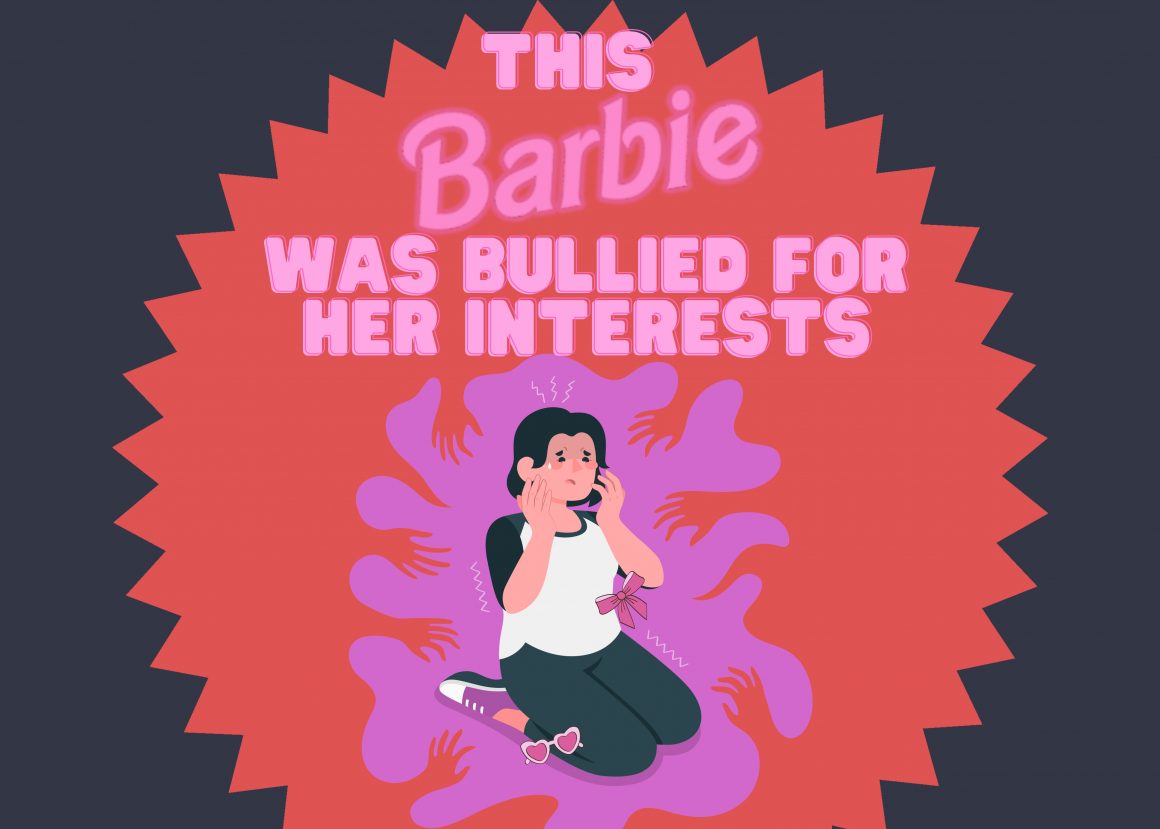
Reflecting on the nature of “girly” interests
By Eda Kamal, November 24 2023—
A pop culture phenomenon taking the internet by storm lately is the new coupling between NFL star Travis Kelce and singer-songwriter Taylor Swift. This situation has seemed to unify the predominantly female fanbase around the pop star and the predominantly male audience enjoying American football. This has led me to observe the difference in how male and female fans are treated in relation to their interests.
As a little girl, I had very stereotypically feminine media and interests such as My Little Pony, makeup, Warrior Cats and Barbie. When I sought out these things, I would sometimes be called “crazy” or “obsessive” for how deeply I relied on them for emotional fulfilment by both boys and girls alike. Nowadays, talking to my female peers I realized I wasn’t isolated in this experience — the horse girls and nail gurus among my friends also noticed a pattern of ridicule for stereotypically feminine interests.
However, the men and childhood tomboys in my social circle were surprised by this observation. They hadn’t faced much contempt on the basis of their fanfare towards sports, cars, and male musicians. More than anything, this was simply a basis for them to positively express themselves and make connections. They were not worried about any kind of pushback they may receive for simply liking something. Of course, men can find interest in Swift’s art and women can enjoy hockey. One’s interests are not confined by their gender. The preconceived stereotypes of the target audiences of entertainment make the biggest differences in how fans are treated.
After some surface-level research, I discovered that domestic abuse rates in England skyrocket after the national team plays — no matter if they win or lose. Earlier this year, a woman posted on Reddit (now removed) detailing her experience of being intimidated by her boyfriend after a Tubi commercial during the Super Bowl, leading to more discussions about domestic violence. I cannot imagine the number of stories like this that have gone undocumented and unnoticed because of the normalization of men’s violence when it comes to fanfare. These incidents aren’t isolated to men — the Slenderman Stabbing is an example of how even teenage girls can translate their interests into violence. However, it is clear that violent enjoyment is much more common with stereotypically male interests. For some, enthusiasm translates into punching walls and breaking glasses — so why is it that women’s fanfare is subject to much more social criticism even when there are so few reports of violence correlated with stereotypically feminine interests?
I suppose the textbook answer would be misogyny, as is to blame for many other societal problems. The unfair criticism of female-led fandom is just one example of how hatred towards women and their interests is normalized in society to the point that children are subject to it before they can have any conceptualization of gender. This can also lead to discussions about how children’s media and toys are unnecessarily gendered, setting limits for boys’ and girls’ interests alike. I feel that my childhood experiences were impacted by the pink frilly shirts and sparkly fairy wings I wore — they brought me joy, but they marked me as a girl to society and made me susceptible to any future criticism based on gender. I have been able to reconcile with this and enjoy whatever I please, no matter how irritating, because life is too short to not have fun.
Swift, just recently having become the number one artist on Spotify, continues to be the subject of criticism for her “crazy” fans and “pretentious” personality. In fact, Swift criticizes the different standards between genders in her song “The Man”. Maybe that’s what’s making the misogynists so angry.
This article is a part of our Voices section and does not necessarily reflect the views of the Gauntlet editorial board.
